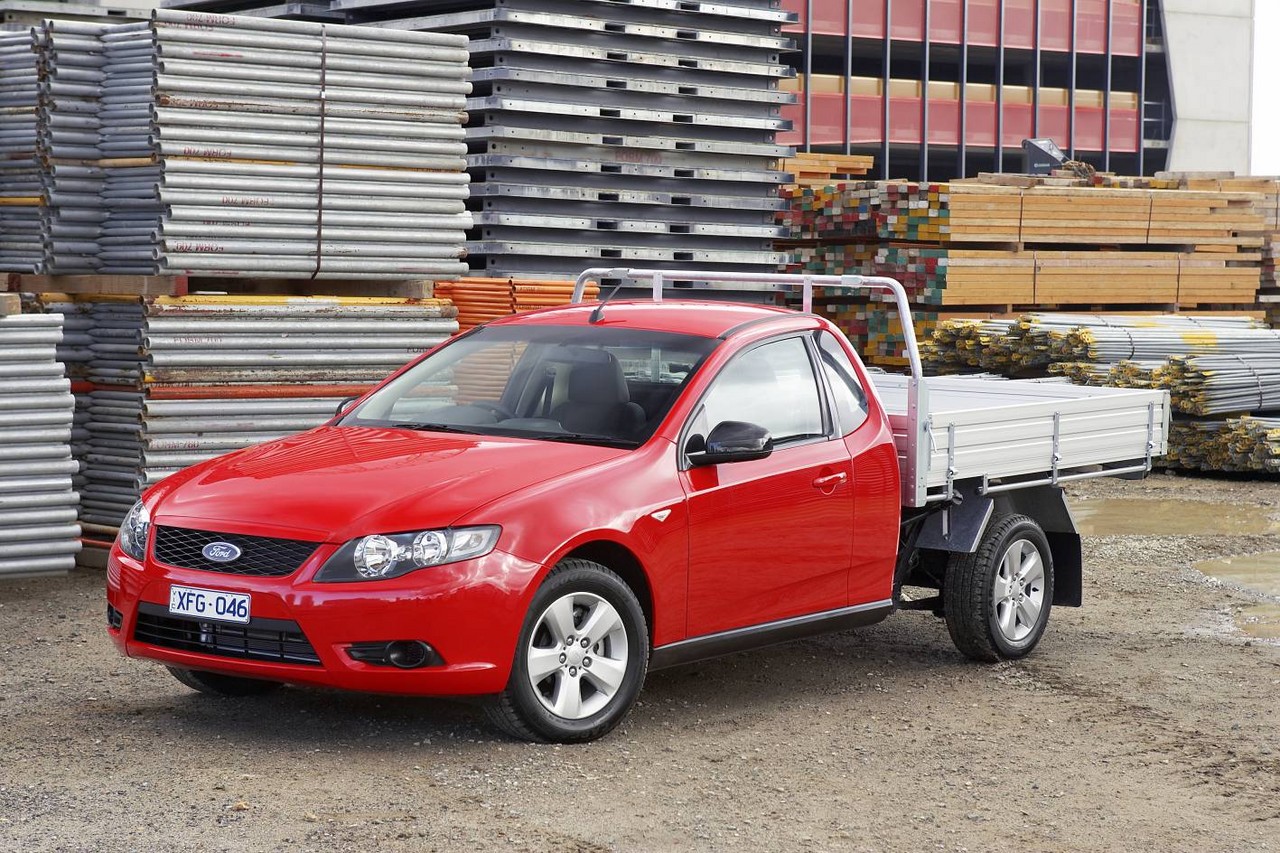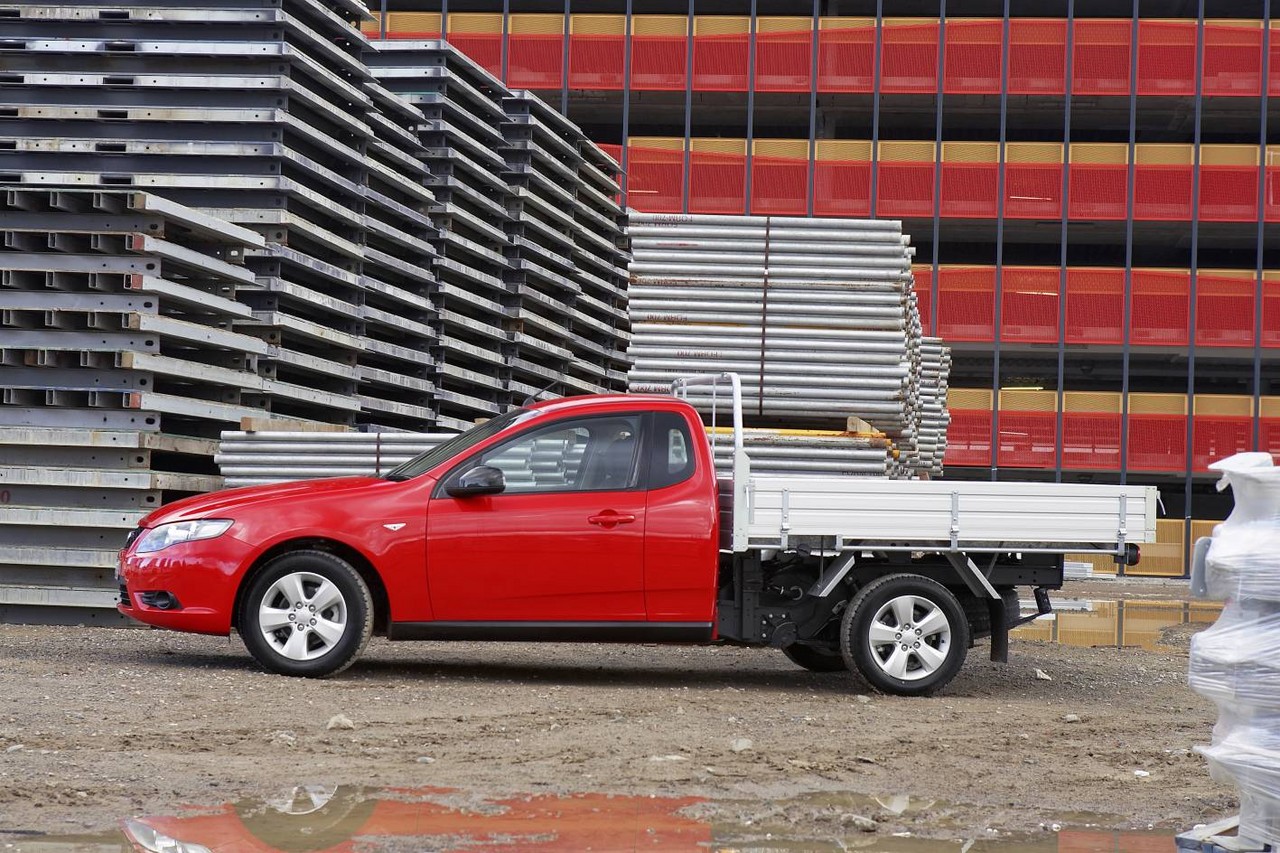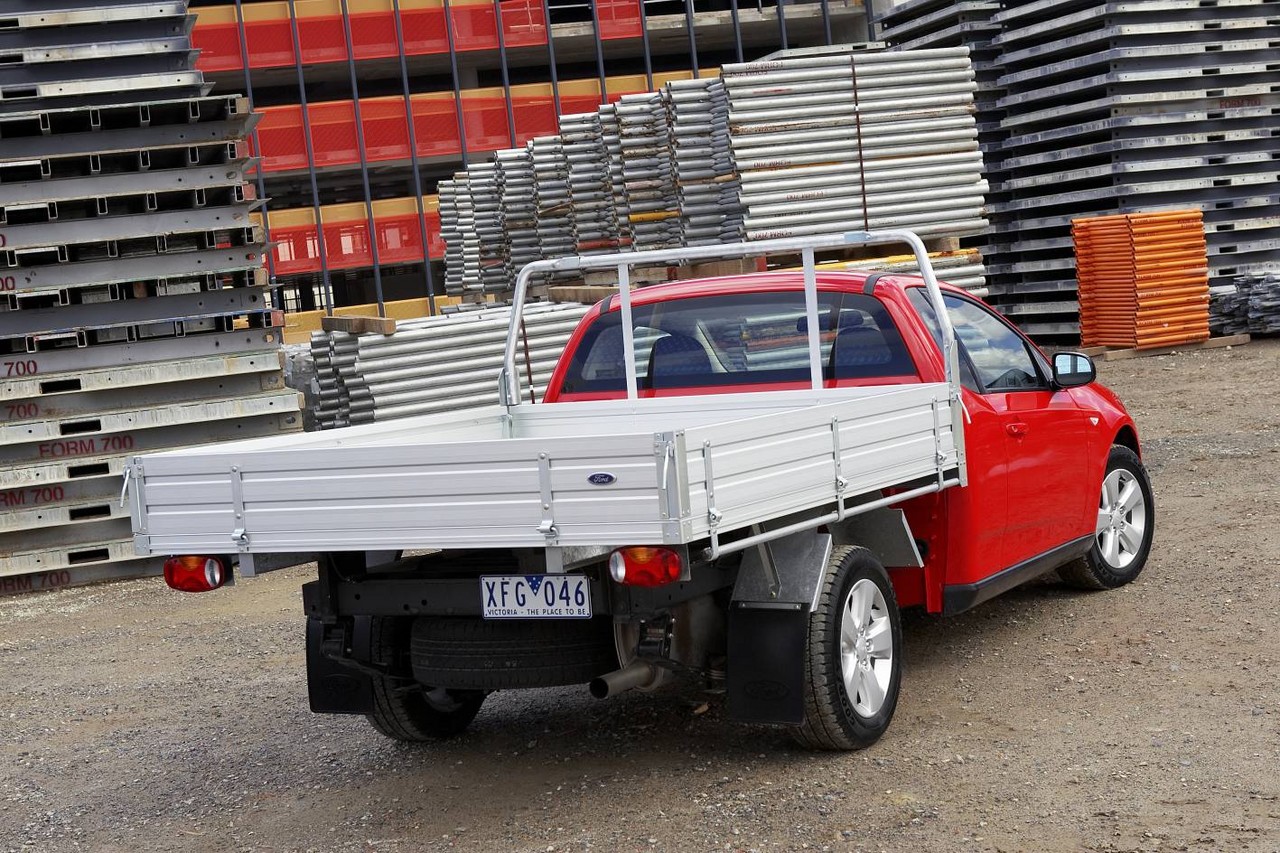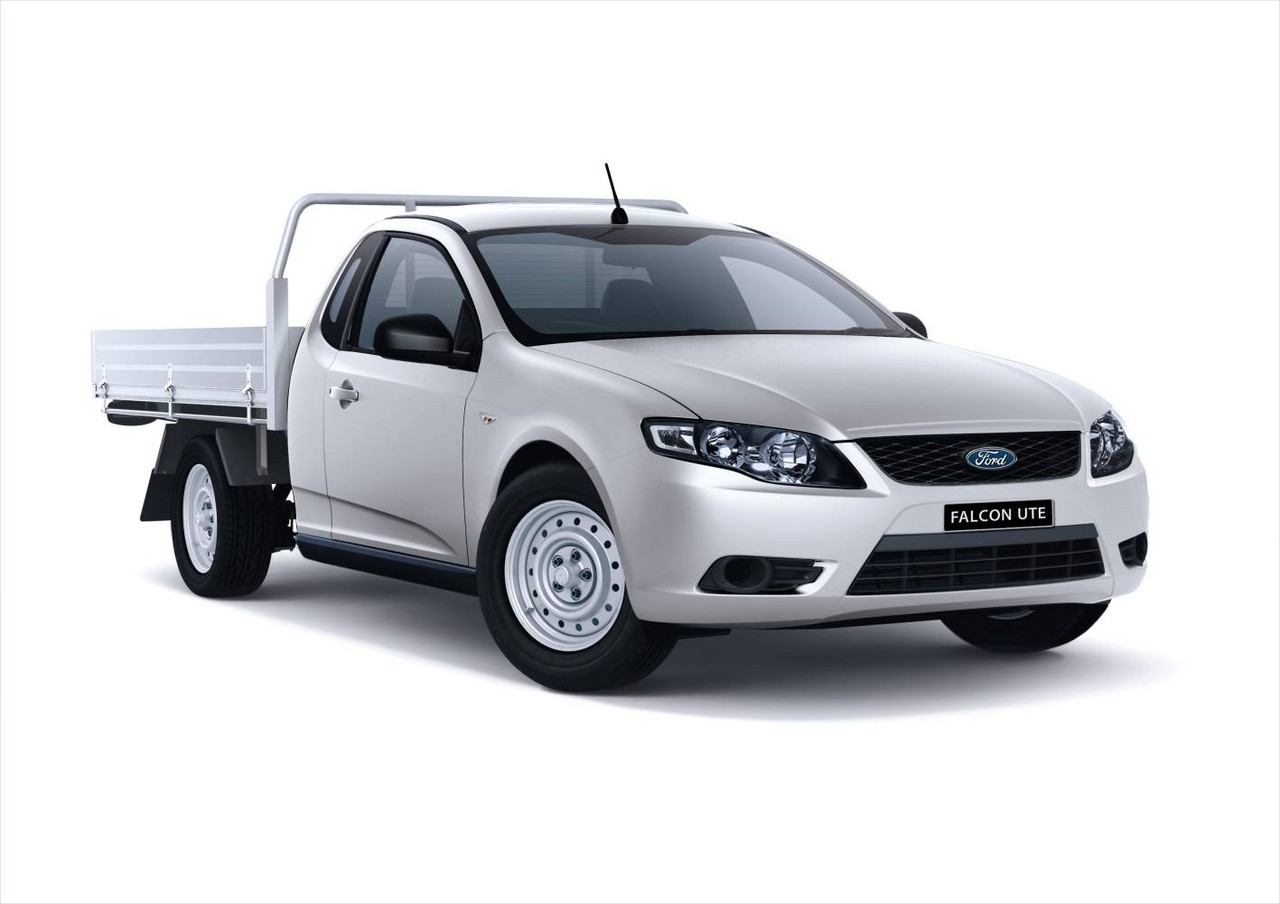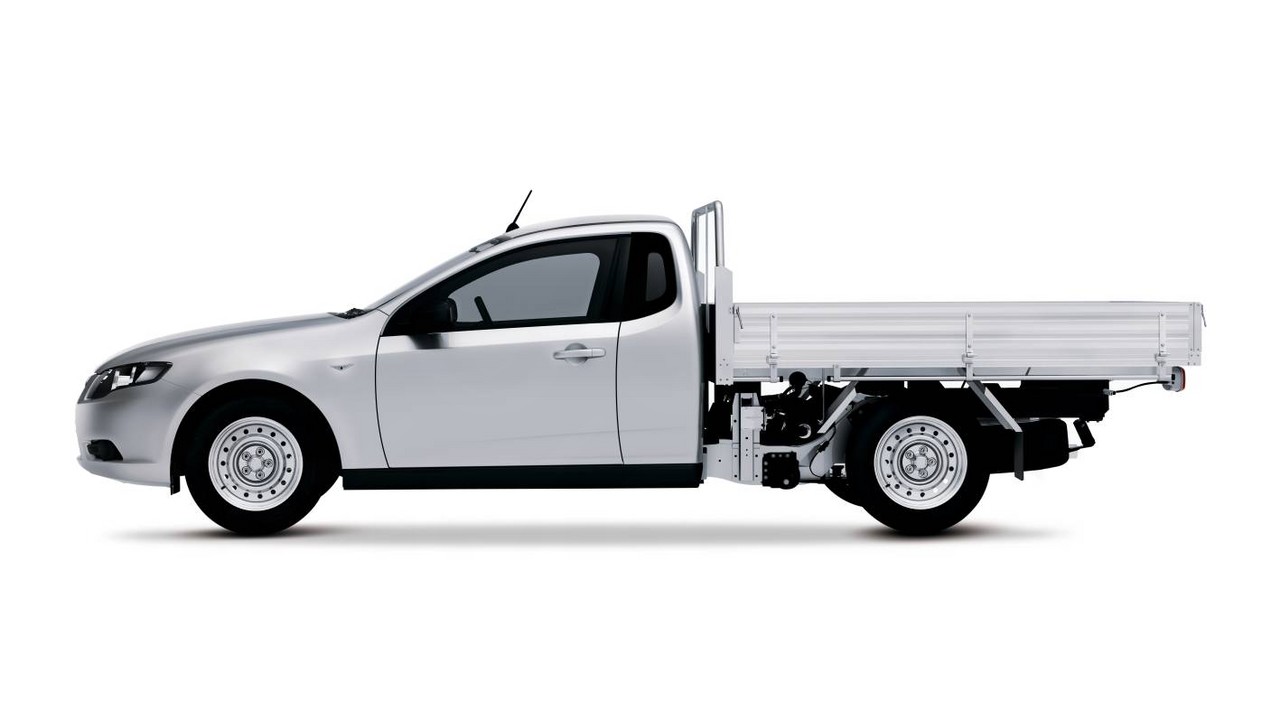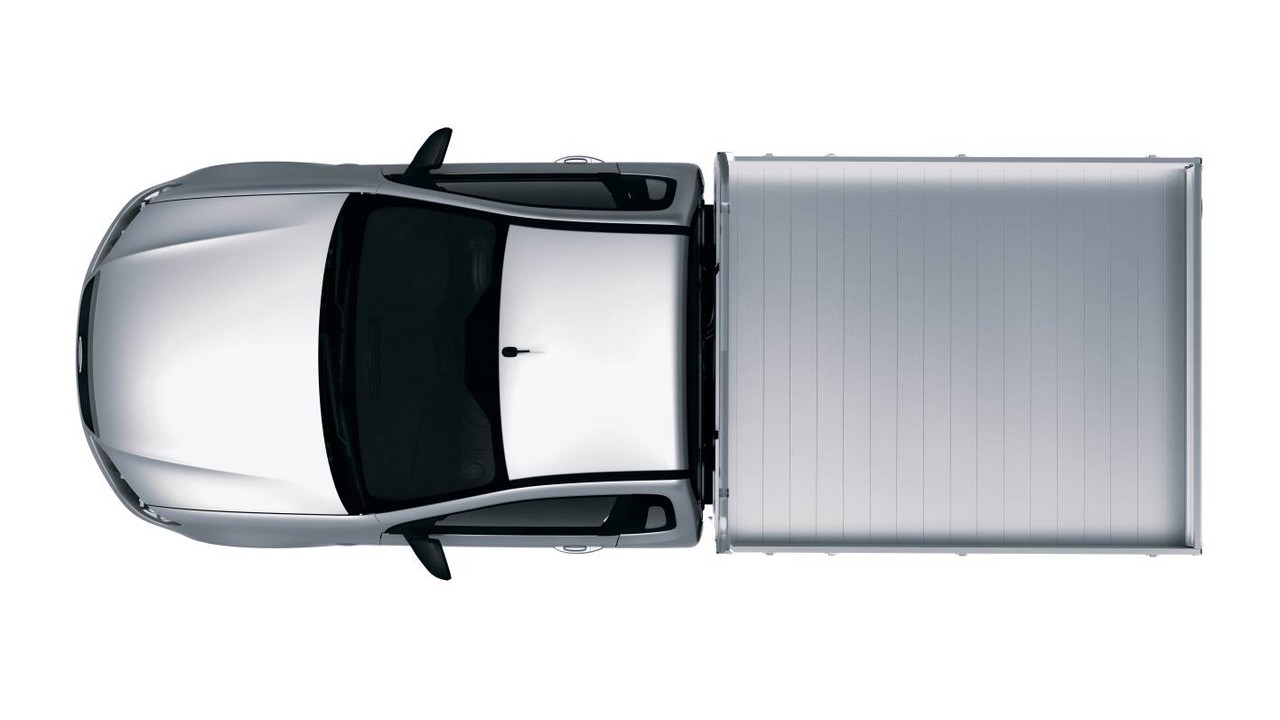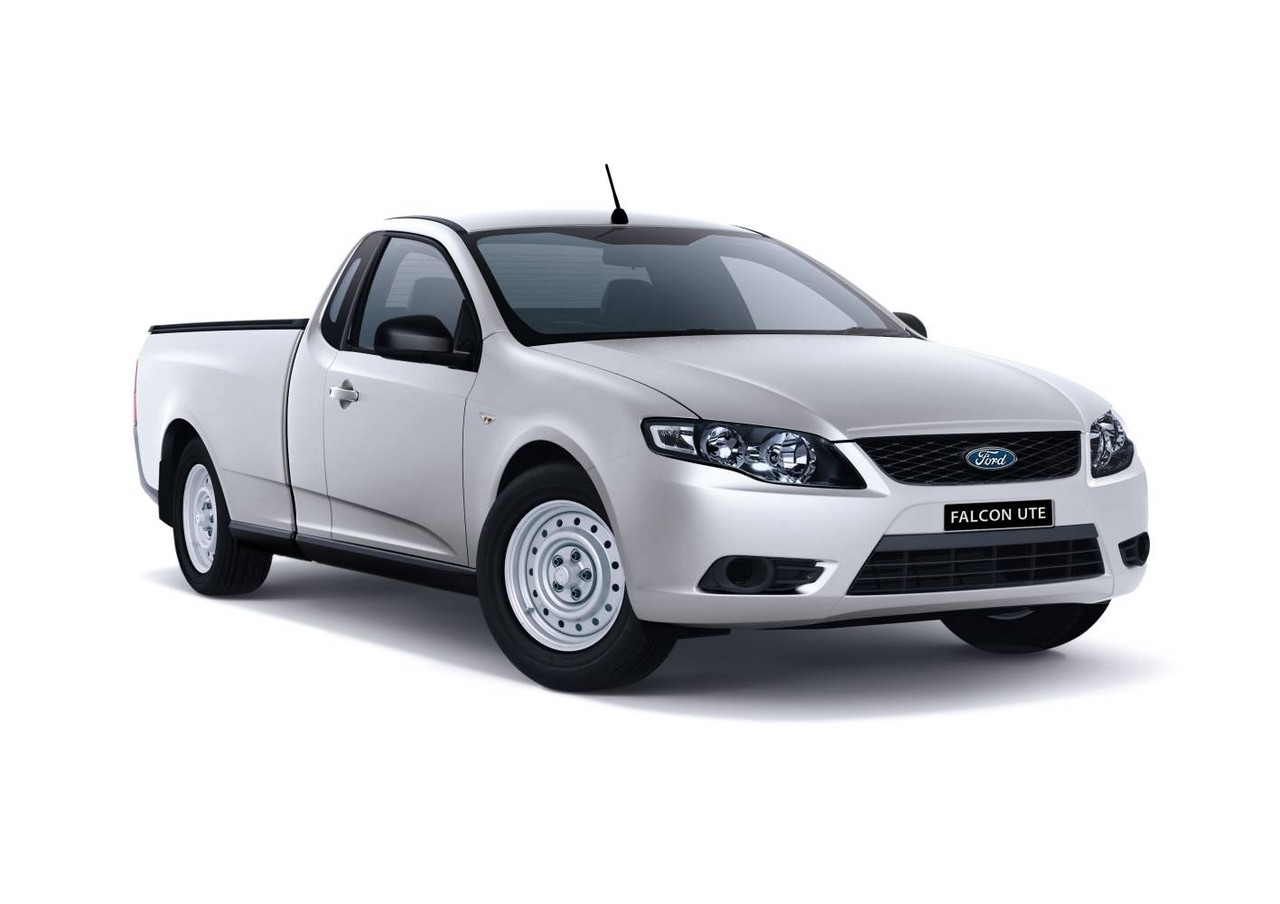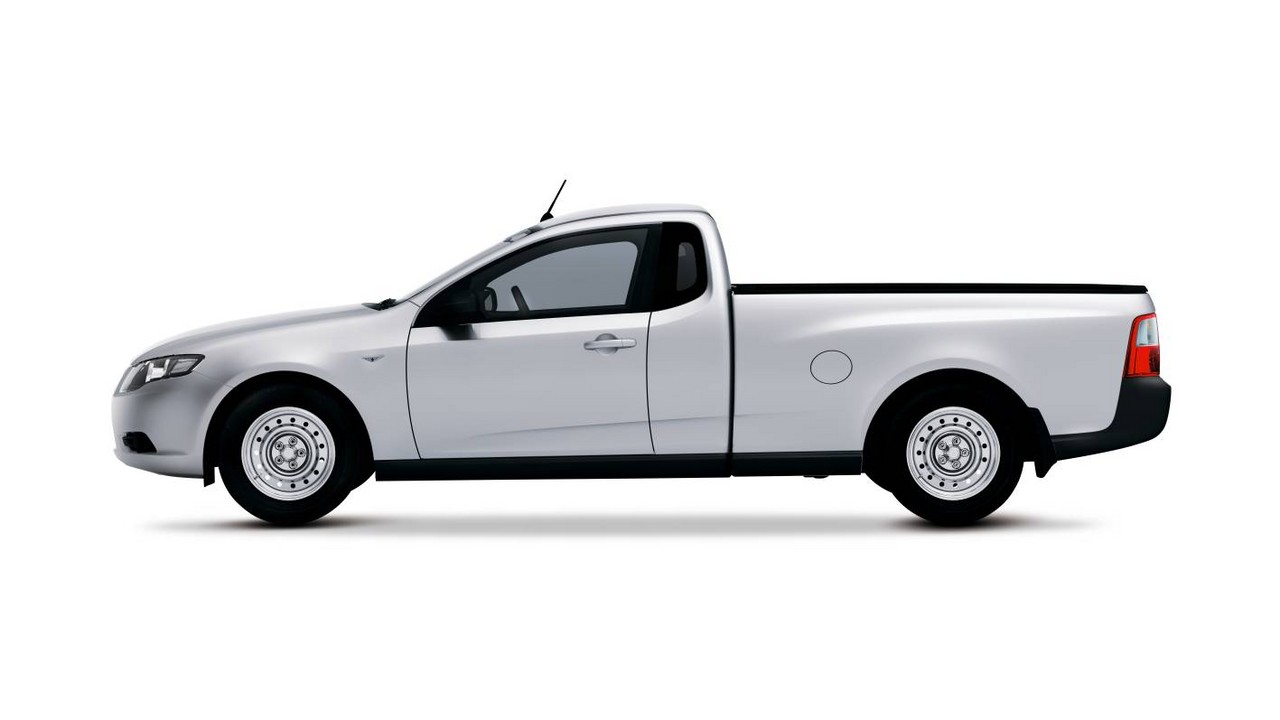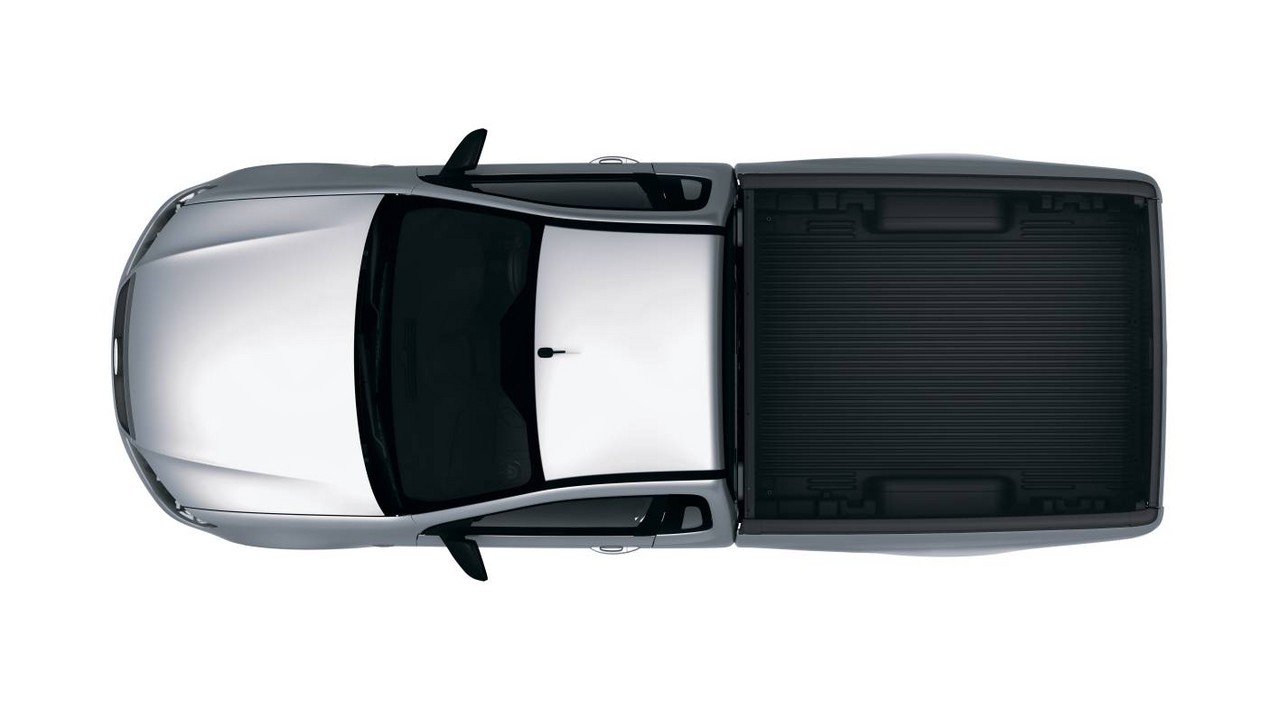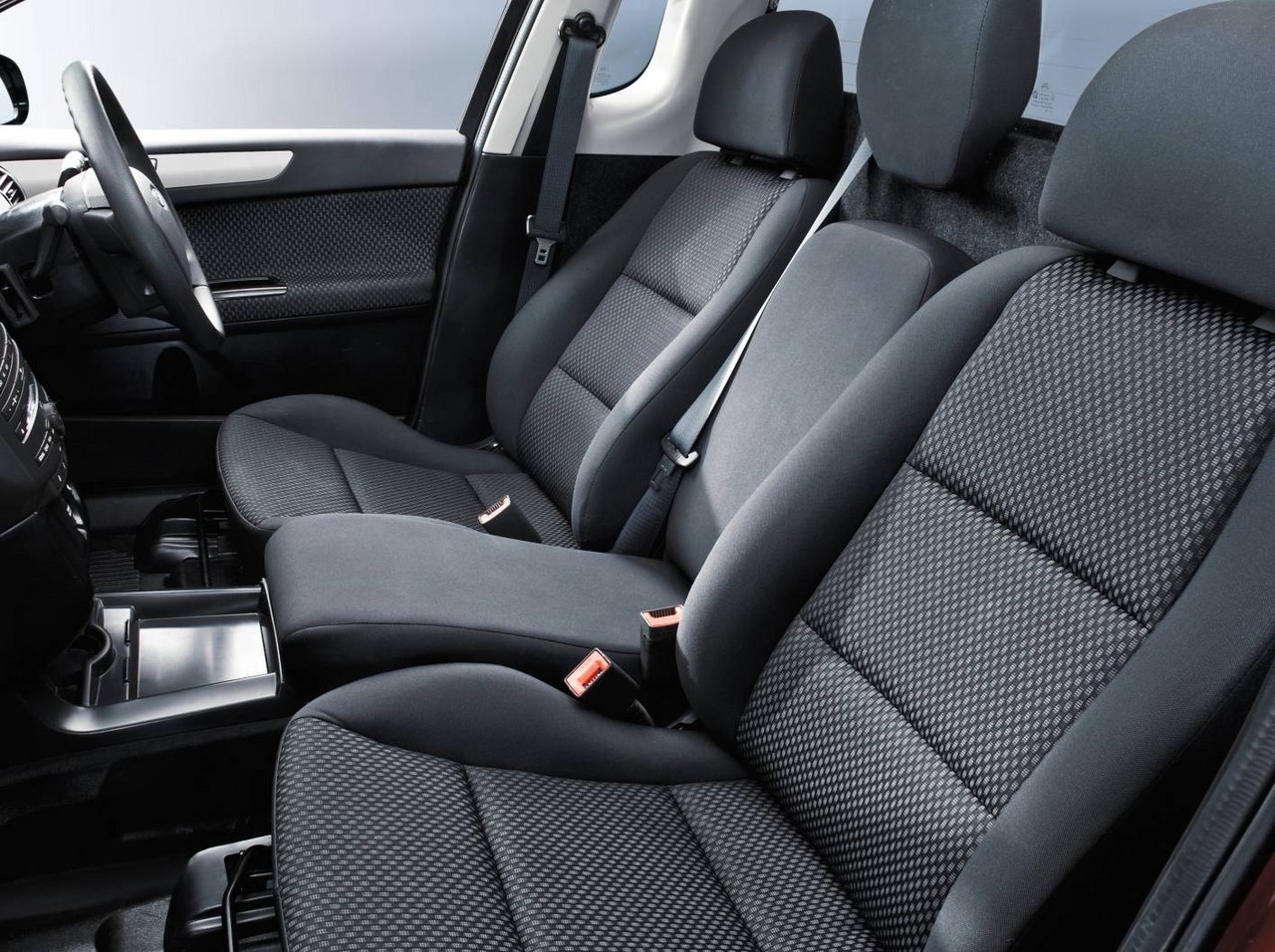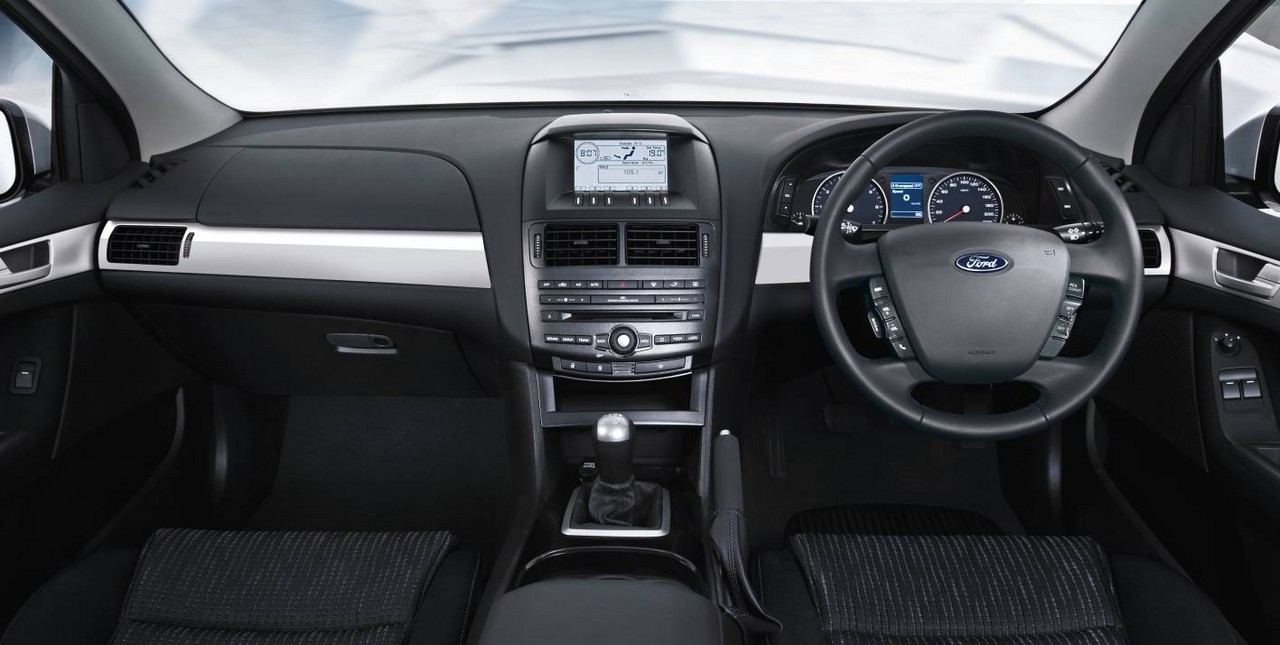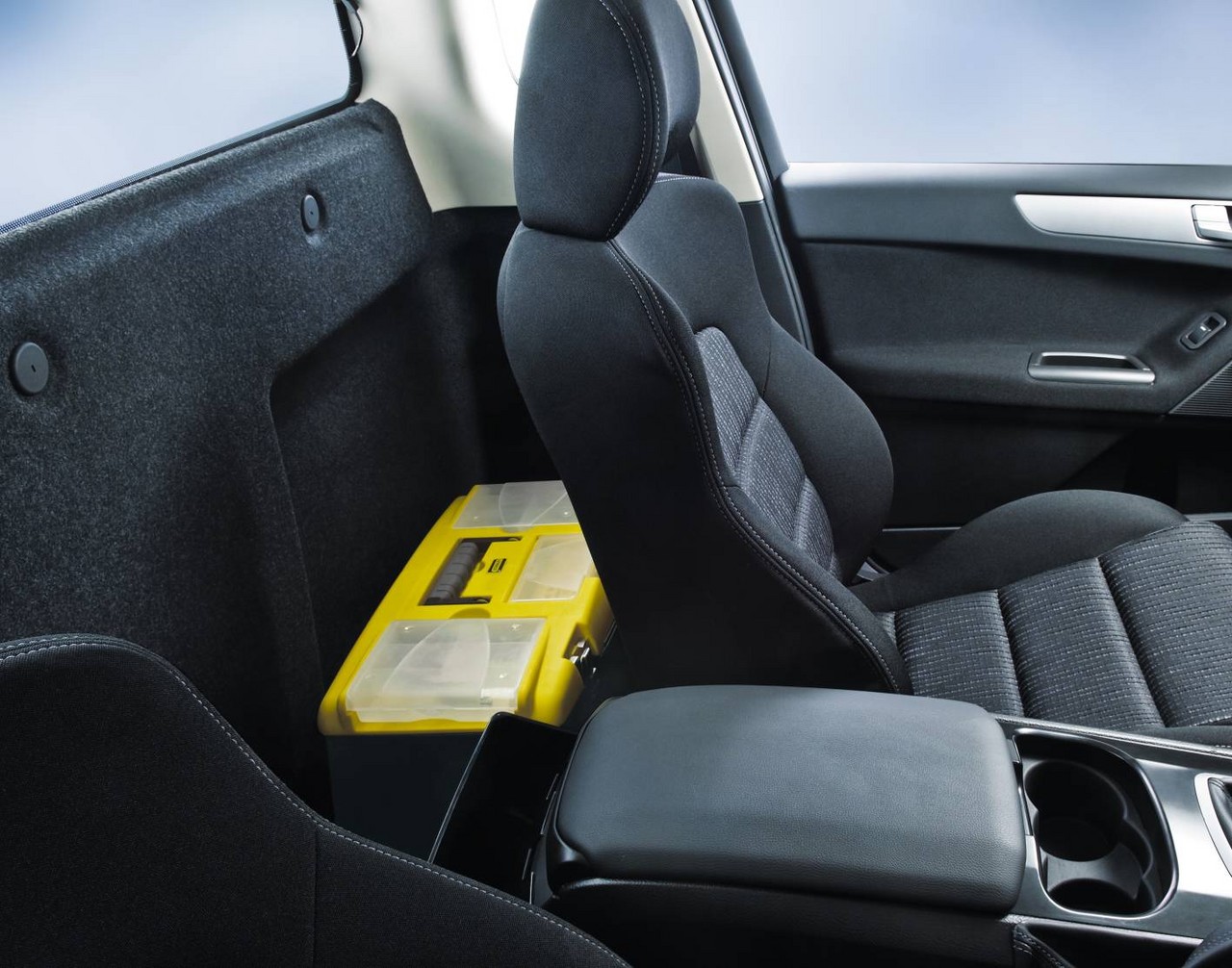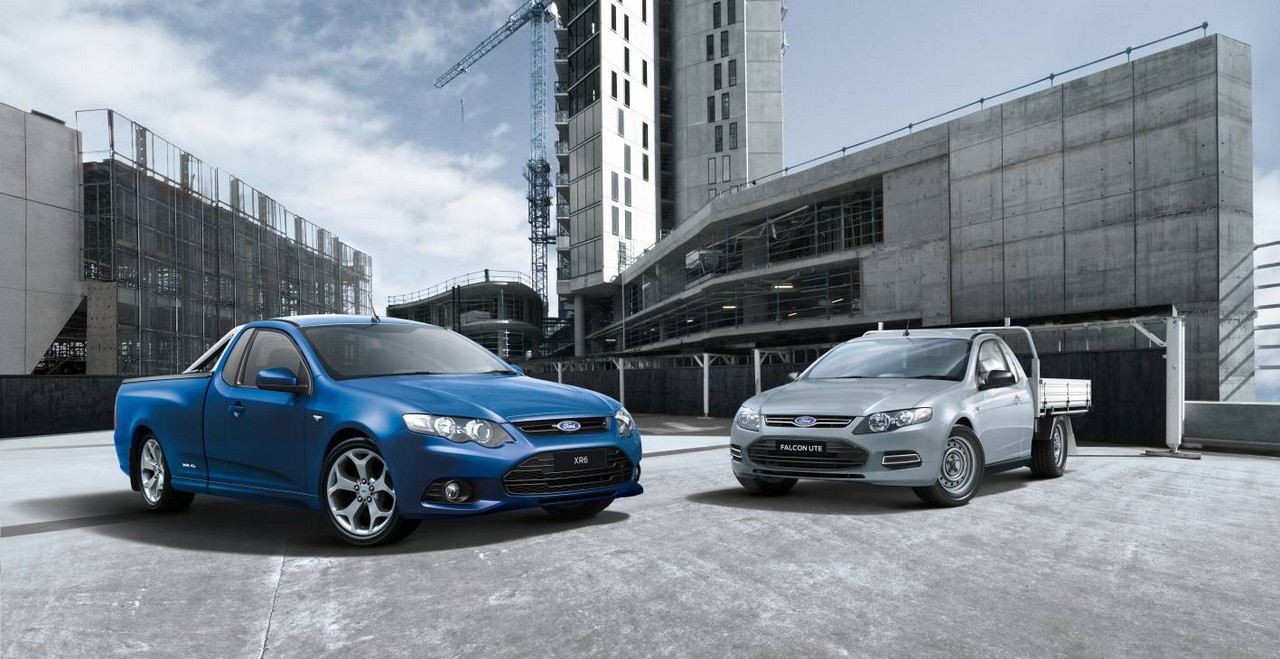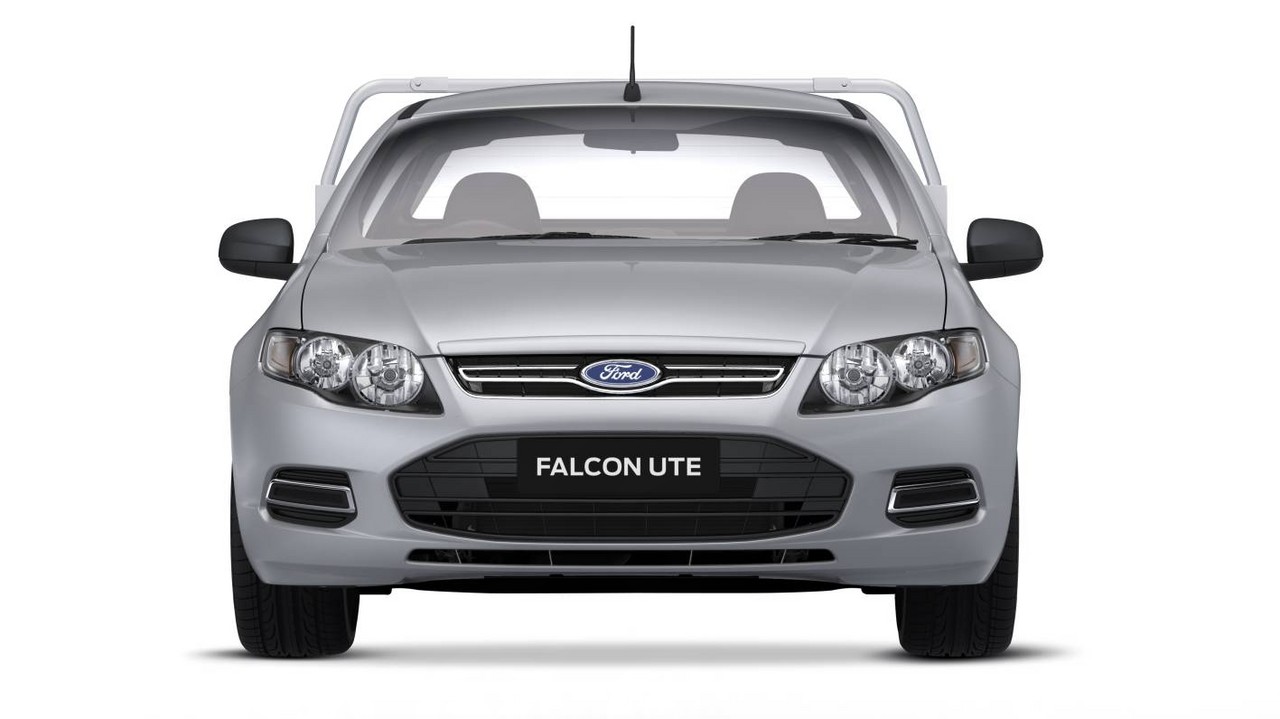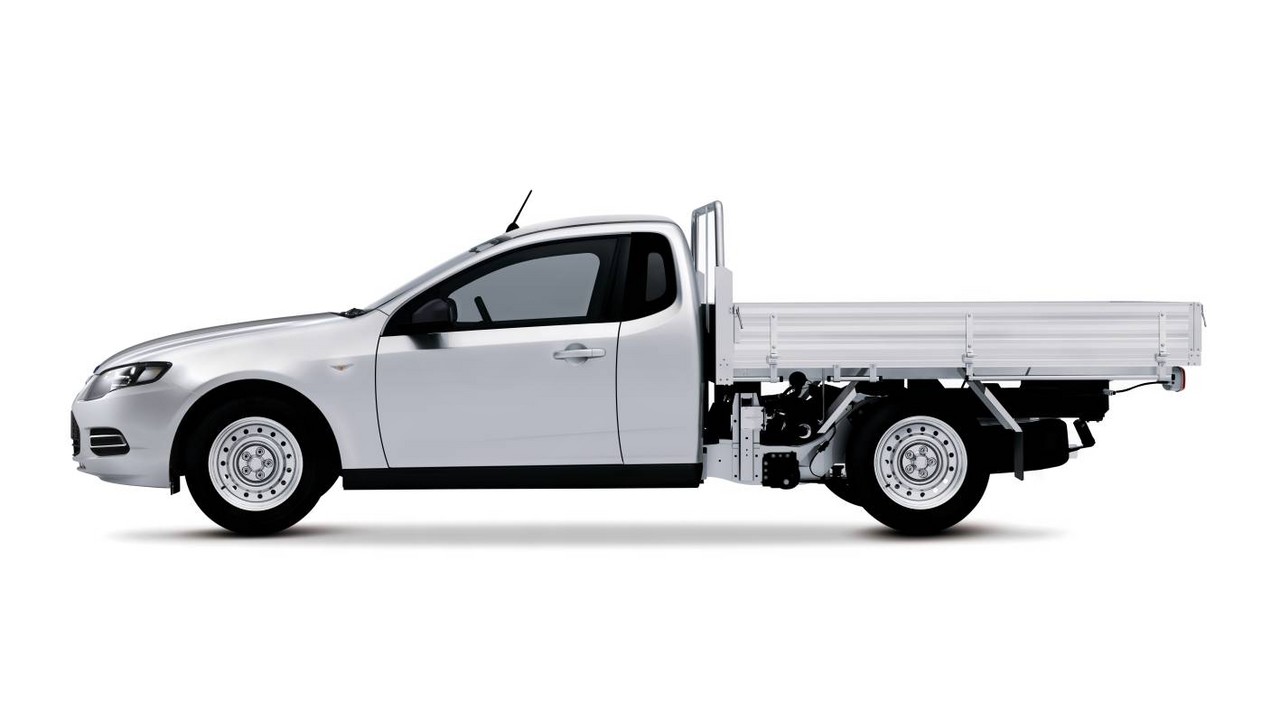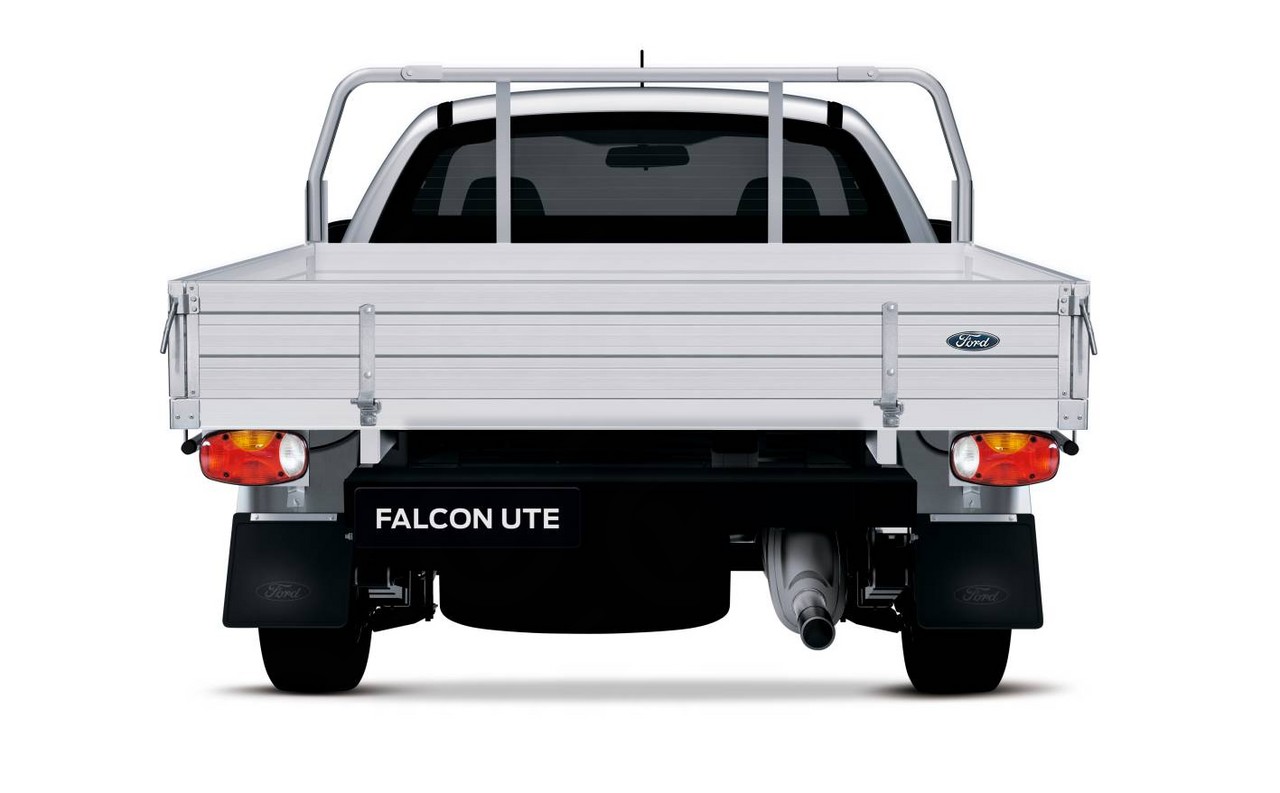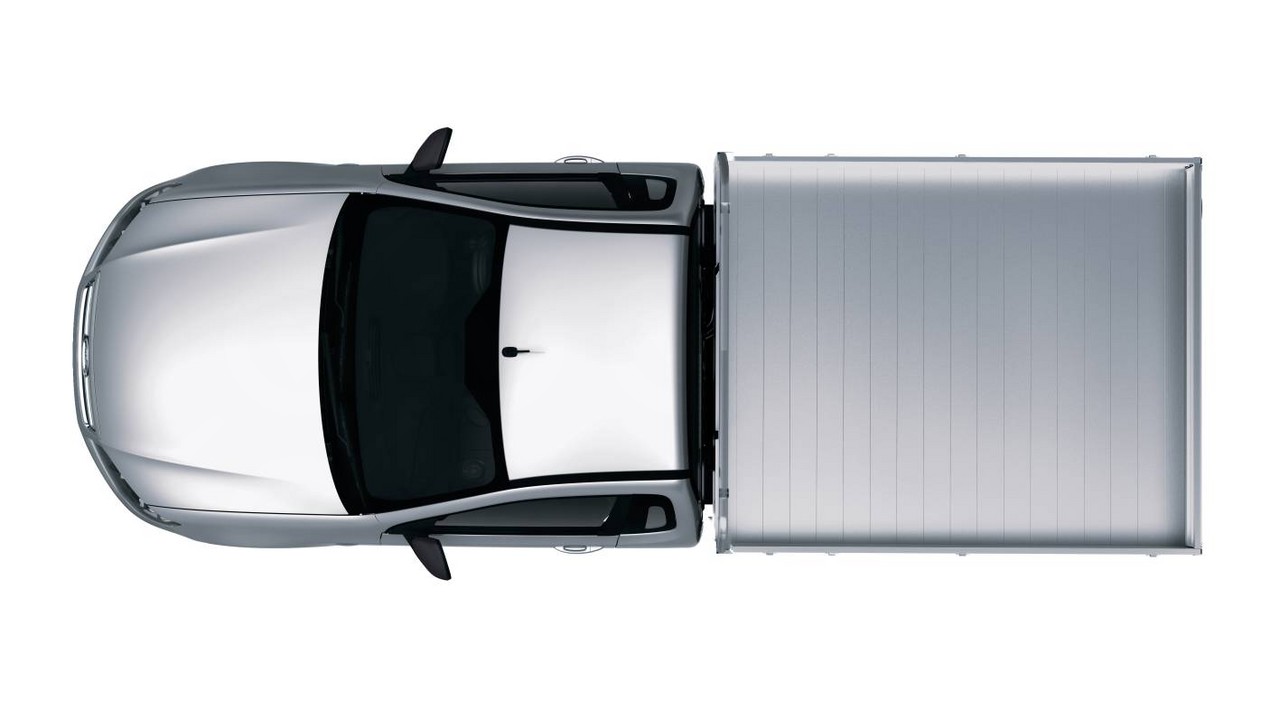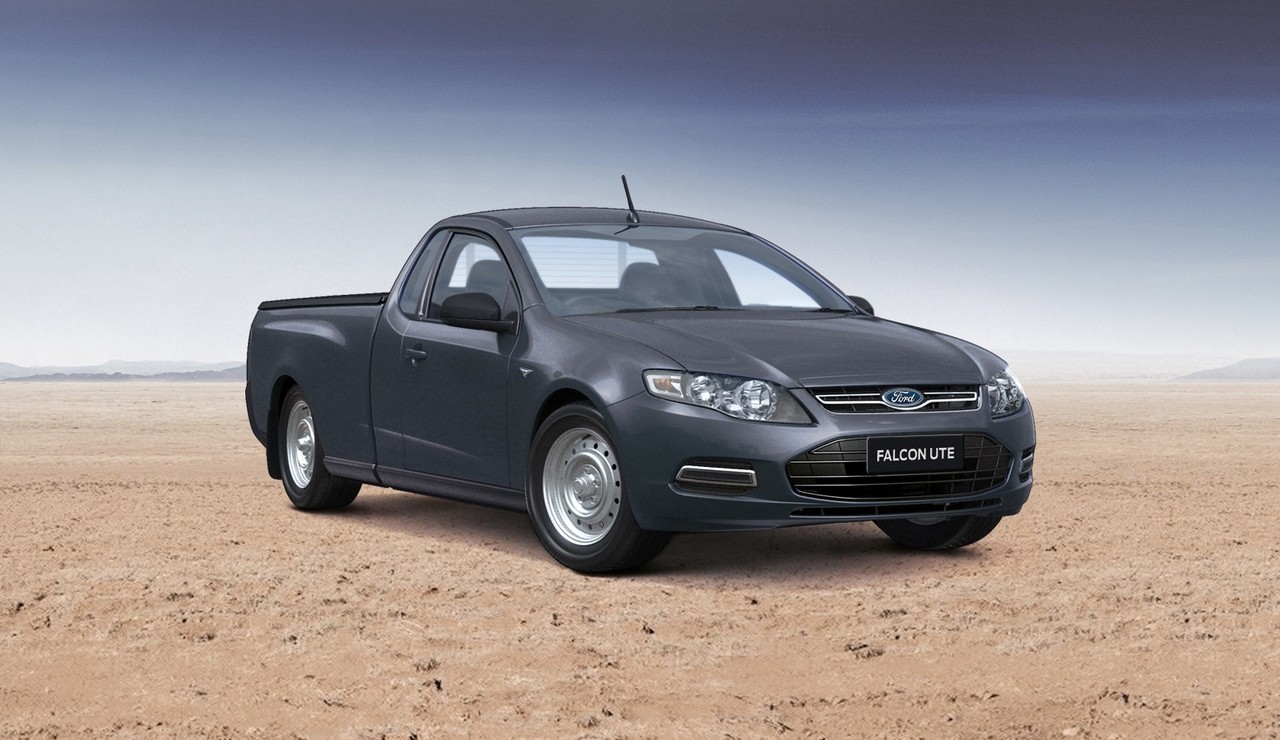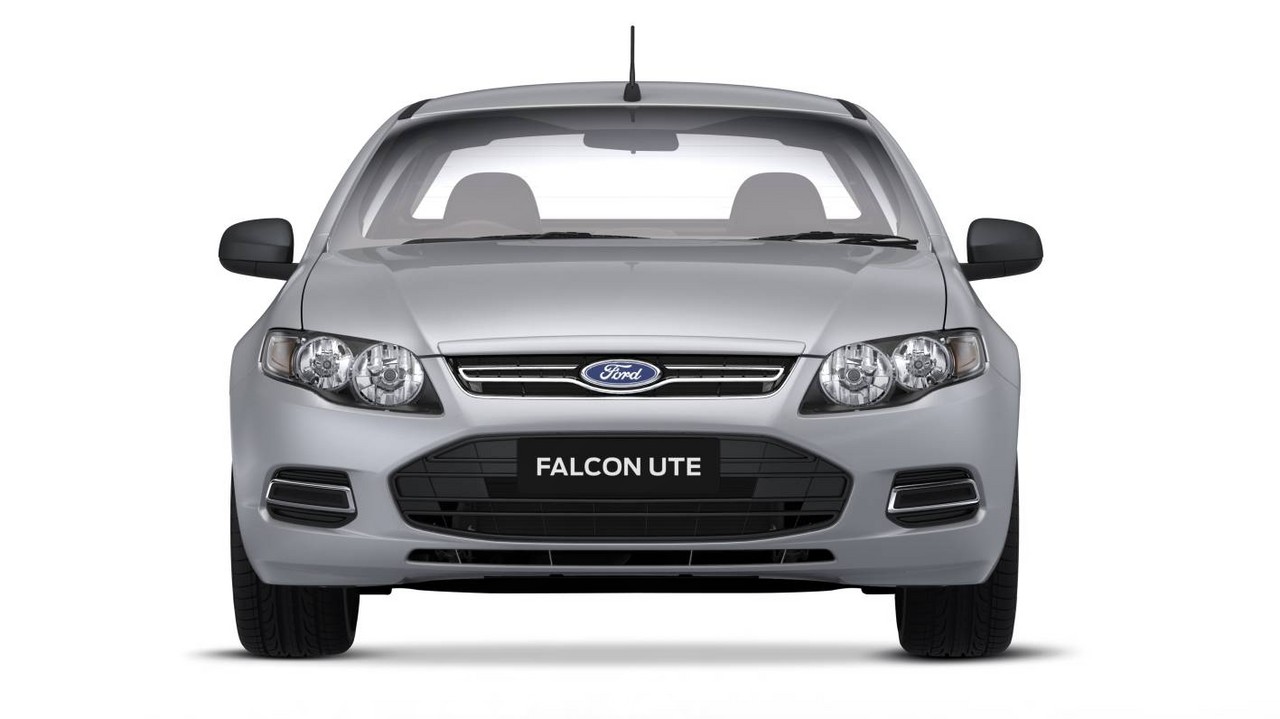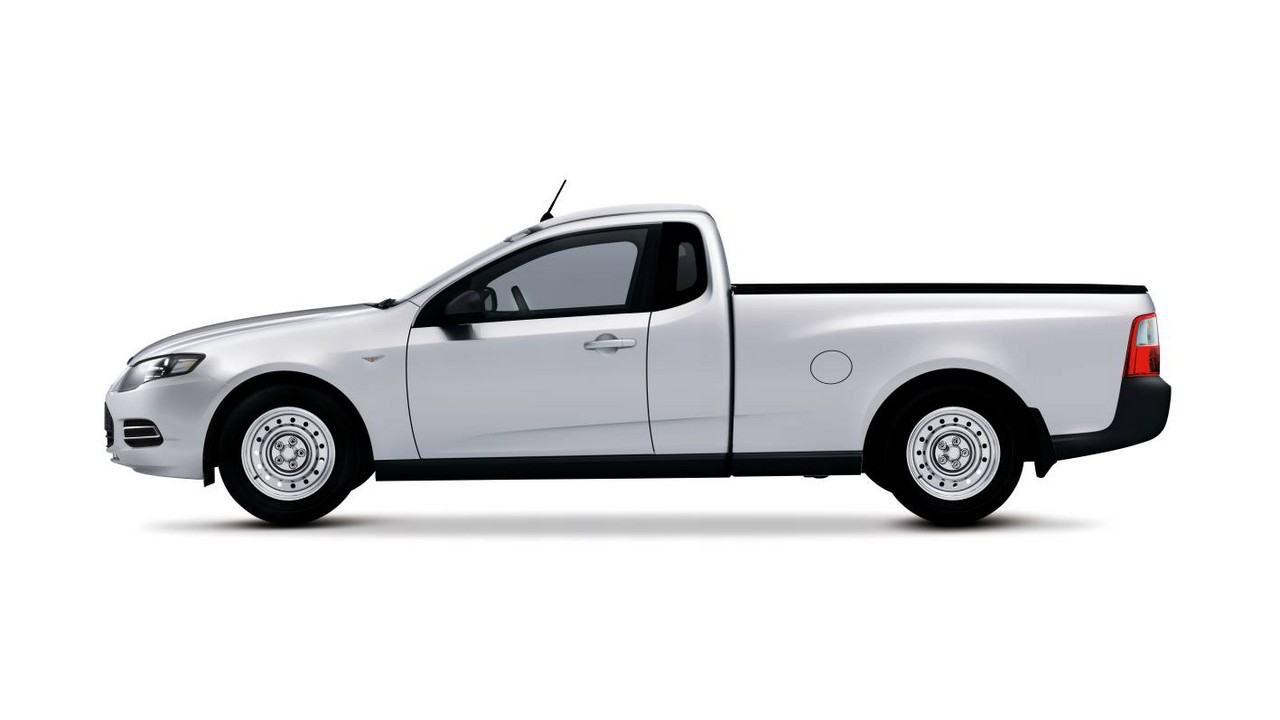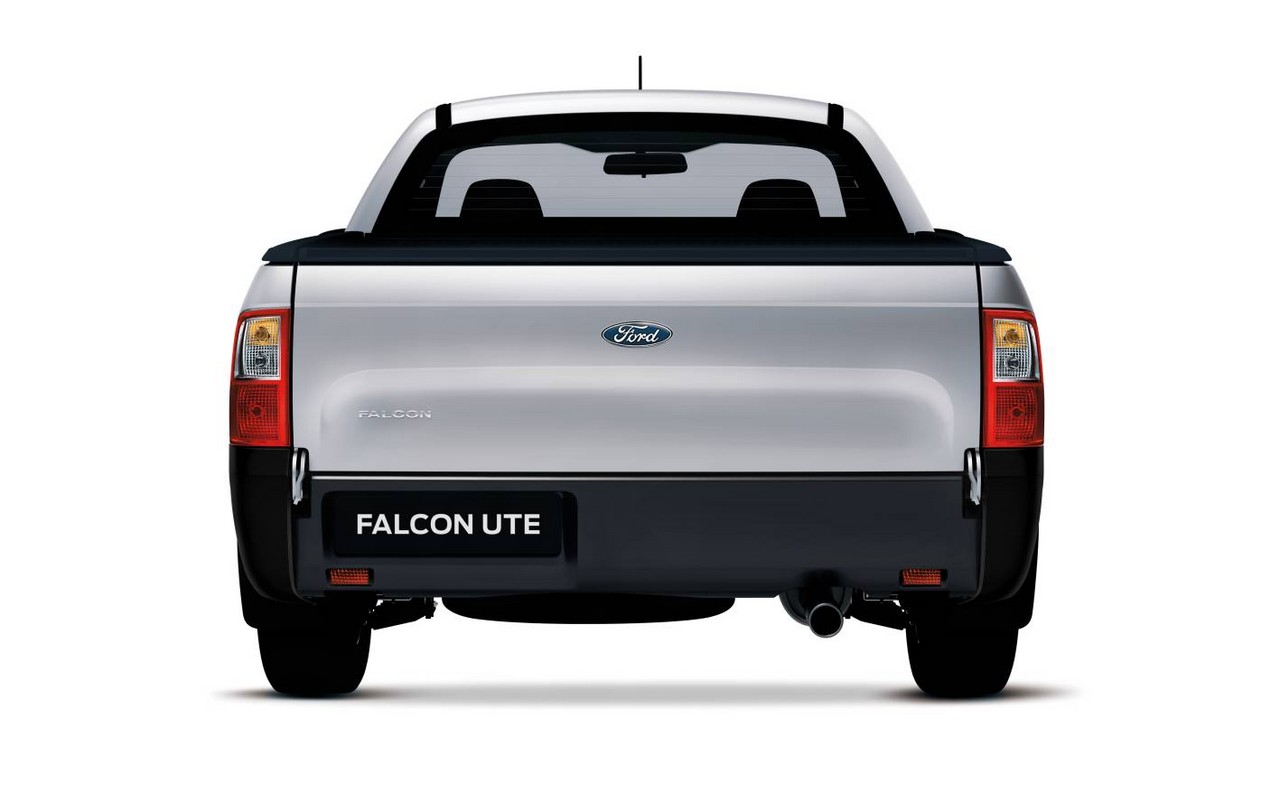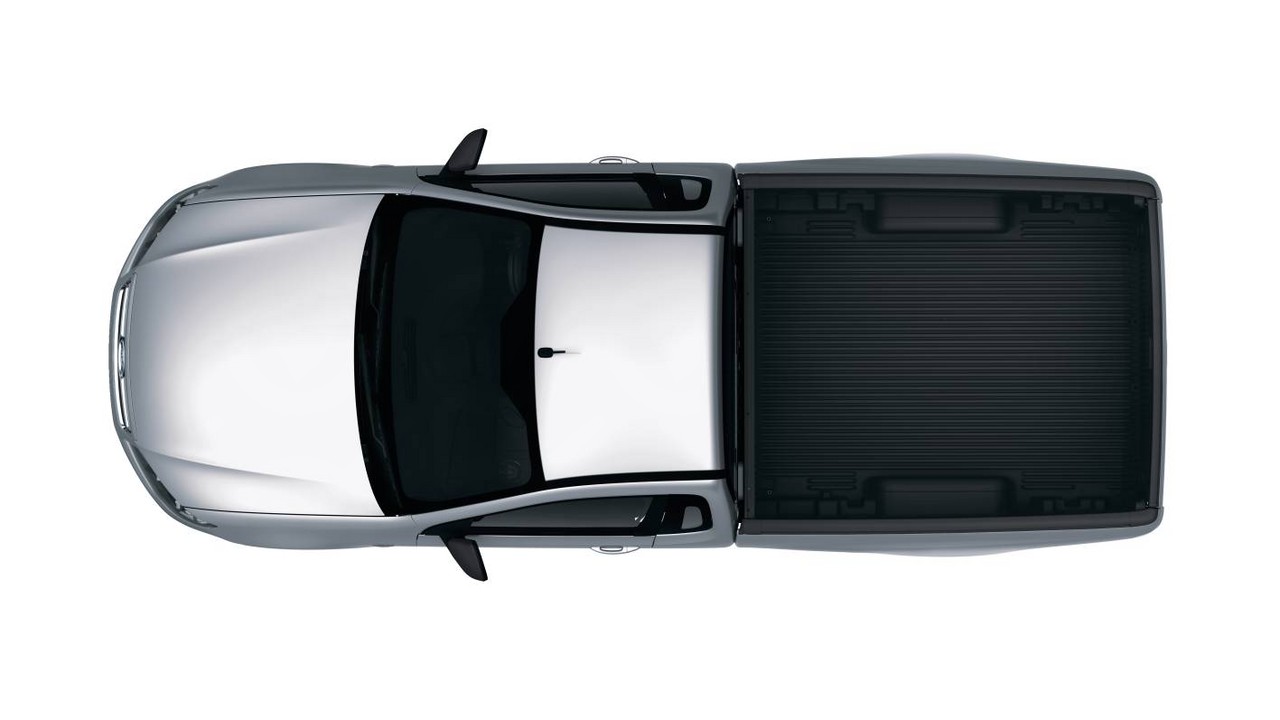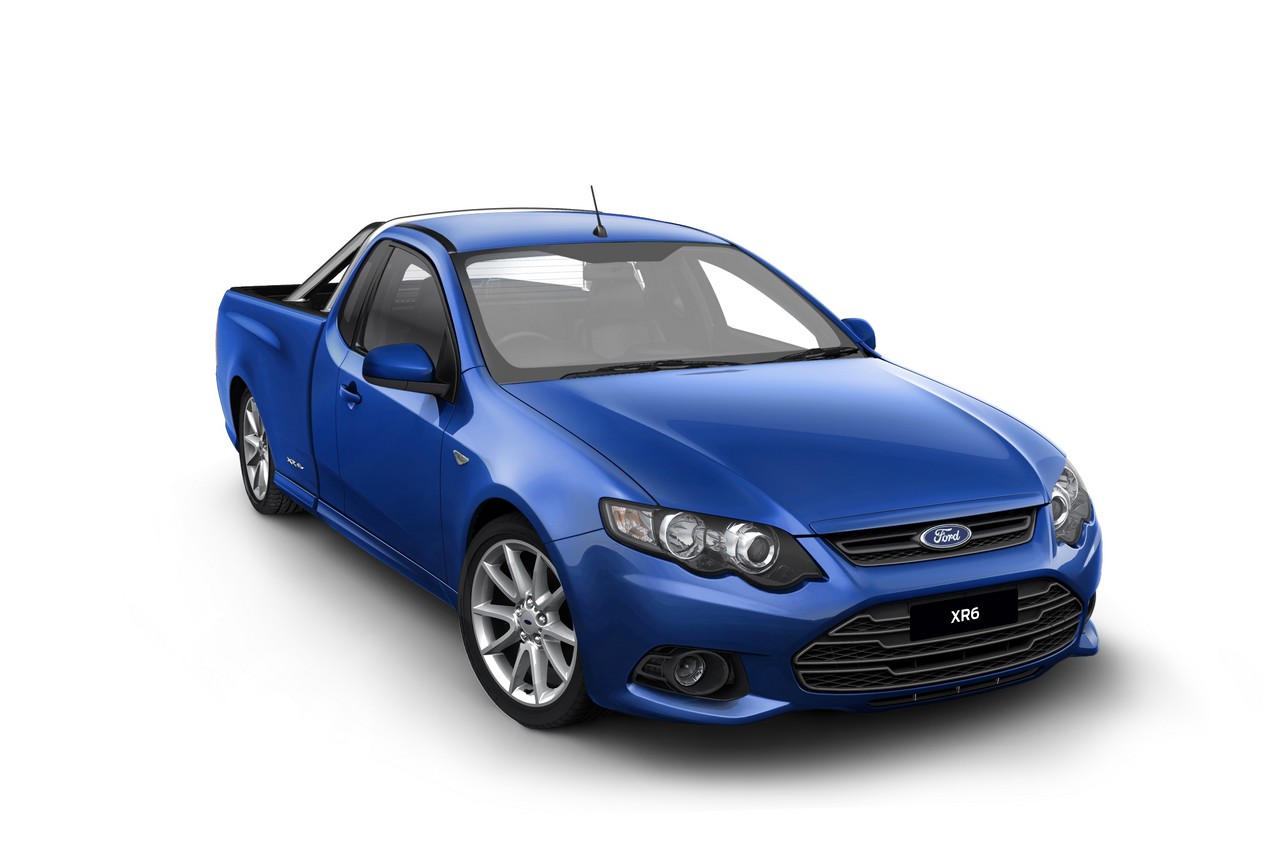
- Responsive 4.0-litre petrol engine
- Powerful XR6 Turbo and XR8 engines
- Accomplished ride/handling balance
- Accurate, well-weighted steering provides good feedback
- Spacious cabin
- Leaf spring suspension can struggle for traction on uneven surfaces
- Compromised driving position
- Cast-iron 4.0-litre engines are heavy and not fuel-efficient
- Coolant lines for automatic transmission cooler susceptible to failure
- For five-speed 5R55N/S transmission, reports of bands snapping and overdrive planetary gear set failure
Review: Ford FG.I Falcon Ute (2008-11)
Overview
Released in May 2008, the Ford FG Mark I (FG.I) Falcon Ute was available as a cab chassis or utility (‘Styleside’) model. Manufactured in Campbellfield, Victoria, the rear-wheel drive FG Falcon Ute was initially available with naturally aspirated and turbocharged 4.0-litre inline six cylinder petrol engines, 4.0-litre six cylinder LPG engines and 5.4-litre V8 engines. However, the 4.0-litre LPG and 5.4-litre V8 petrol engines were discontinued in 2010, while a 4.0-litre ‘EcoLPi’ dedicated LPG engine was released in July 2011.
Engines: Barra 195, Barra 270T, E-Gas, EcoLPi and Boss 290
Of the engines,
- The 4.0-litre Barra 195 inline six-cylinder petrol engine had a cast iron block, a cast aluminium cylinder head, double overhead camshafts (DOHC, simplex chain-driven), dual independent variable camshaft timing, four valves per cylinder, Duratec-style finger followers, a dual resonance inlet manifold, coil-on-plug ignition, electronic throttle control, exhaust gas recirculation, twin knock sensors and a compression ratio of 10.3:1. Compared to its Barra 190 predecessor, changes for the Barra 195 engine included
- A new ‘fast-burn’ cylinder head which used revised intake port profiling and combustion chamber geometry to increase the swirl of the incoming fuel/air charge for a quicker rate of combustion; and,
- A new dual-mode, split plenum composite intake manifold with a new electronic throttle body and fuel rail assembly;
- For the Falcon XR6 Turbo, the Barra 270T engine added a Garrett GT3576R turbocharger which had engine oil-lubricated and water-cooled bearings, an air-to-air intercooler and an electronic single bypass wastegate. The turbocharger was mounted off a cast stainless steel exhaust manifold and provided maximum boost pressure of 7 psi (10 bar). Compared to the Barra 195 engine , the Barra 270T engine had ‘dished bowl’ shaped pistons, more temperature tolerant exhaust valves and increased fuel pressure (4.0 bar, compared to 2.4 bar). Relative to its Barra 245T predecessor, introduced
- A ‘fast-burn’ cylinder head (described above);
- A new GT3576R turbocharger which provided boost pressure 30 per cent faster;
- A new intercooler – with bar and plate construction – which was 50 per larger, provided a 40 per cent improvement in heat rejection and a 34 per cent reduction in air low restriction;
- A new single runner intake manifold;
- A new exhaust manifold which provided a 14 per cent reduction in flow restriction;
- An increased compression ratio 8.8:1 (previously 8.7:1);
- Two cam timing strategies: 1) a primary VCT strategy which balanced maximum power with fuel efficiency, and 2) a secondary strategy which optimised turbocharger response for wide open throttle acceleration events; and,
- A transient overboost function which enabled the engine to increase boost pressure by up to 10 per cent for several seconds.
- Compared to the Barra 195 , the 4.0-litre Barra E-Gas dedicated LPG engine had a Vialle closed-loop single-point carburetion system, stronger connecting rods, a compression ratio of 10.3:1 and hardened valves and valve seats. For the FG range, the E-Gas engine had new inlet and exhaust systems, a re-tuned throttle map and optimised engine calibrations;
- Released in July 2011, the 4.0-litre Barra EcoLPi engine had liquid-phase LPG injection whereby liquid LPG was injected directly into the intake port. Compared to its E-Gas predecessor, changes for the Barra EcoLPi engine included a new high-pressure rail and injectors, new lightweight pistons, a 12.0:1 compression ratio, new polymer fuel lines, fuel line and in-tank filters, fuel tank internals, high-pressure fuel pump, catalytic converter (now shared with the Barra 195 engine) and fuel priming strategy;
- For the Falcon XR8, the 5.4-litre Boss 290 V8 engine was assembled by hand in Campbellfield and had a cast iron block, a cast aluminium alloy cylinder head, high compression pistons with domed tops, sintered conrods, a forged steel crankshaft, double overhead camshafts, roller finger followers, four valves per cylinder, a 75 mm throttle body with drive-by-wire linkage and a compression ratio of 10.5:1. Compared to the Boss 260 V8 engine , the Boss 290 engine had high-lift inlet and exhaust camshafts that increased valve lift to 13 mm and 12 mm, respectively (compared to 10 mm and 10 mm in the Boss 260 ) for improved inlet flow and exhaust gas clearance.
In June 2010, a new catalytic converter was introduced and the powertrain control module (PCM) had new calibrations for Euro IV emissions compliance.
Transmissions
The FG Falcon Ute was available with the following transmissions:
- for the E-Gas engine, the four-speed 93-4AT automatic transmission;
- for the 4.0-litre petrol, the six-speed Tremec TR6060 manual transmission, Ford’s five-speed 5R55S automatic transmission (discontinued in June 2010) or the six-speed ZF 6HP26 automatic transmission;
for the EcoLPi engine, the six-speed ZF 6HP26 automatic transmission; and, - for the Barra 270T and Boss 290 engines, six-speed Tremec TR6060 manual or six-speed ZF 6HP26 automatic transmissions.
The five-speed 5R55S and post-June 2010 six-speed ZF 6HP26 automatic transmissions were available with column-mounted gearshift levers so that these models could have three-seat front benches.
The ZF 6HP26 transmission was available in two versions: a standard version with a torque capacity of 450 Nm and a high-performance 600 Nm version (for use with the Barra 270T and Boss 290 engines) which had upgraded clutches with extra plates in the clutch packs. For the Barra 270T and Boss 290 engines, the 6HP26 transmission had a cylinder cut function whereby the fuel injectors would be deactivated during gearshifts to reduce shift times and better control turbo boost pressure during gearshifts.
Development and dimensions
In addition to powertrain changes, the FG Falcon Ute introduced the following developments:
- A stronger body structure which made increased use of high-strength steels and ultra high-strength Boron steel and included a new front subframe, additional reinforcement inside the front rails, new high strength floor cross members, transmission tunnel reinforcement and a larger, stronger B-pillar;
- New Virtual Pivot Control Link front suspension (described below);
- A forward-mounted, Y-shaped steering rack with variable-ratio steering gear;
- Upgraded static sealing and triple-sealed doors;
- Larger, 81 litre fuel tanks; and,
- A self-adjusting park brake (except for models with the column-mounted gearshift lever).
Compared to the BF Falcon Ute , the FG Falcon Ute with the styleside body was 10 mm longer (at 5096 mm), 63 mm wider (1934 mm), 28 mm taller (1499 mm) and had a 9 mm longer wheelbase (3104 mm).
The Styleside Box (SSB) was redesigned to reduce the gap between the rear of the cab and the front of the box, while the top lip of the box featured black powder-coated aluminium rails. The styleside cargo area was 1843 mm long, 442 mm deep and, between the wheel arches, 1224 mm wide.
Suspension
The FG Falcon Ute’s double wishbone front suspension had two lower ball joints that connected the separate lower arms to the suspension knuckle. These two lower links created a virtual pivot of the lower arm – hence the ‘Virtual Pivot Control Link’ name – and allowed the suspension to behave as though the lower pivot point was at the intersection of the two arms. Due to the use of aluminium and high strength steels, the Virtual Pivot Control Link suspension was 22 kg lighter than that in the BF Falcon Ute .
At the rear, the Hotchkiss rear suspension consisted of a live rear axle with leaf springs. For the FG Falcon Ute, the rear suspension was revised with stiffened three-pin leaf spring shackles.
For the FG Falcon Ute, monotube front shock absorbers were fitted as standard across the range, while the R6 SSB and XR utes also had monotube rear shock absorbers. Twin-tube rear shock absorbers, however, were fitted for the standard Falcon Ute, R6 cab chassis and R6 styleside with one-tonne suspension. Furthermore, the cab chassis Falcon Ute and Falcon Ute R6 had one-tonne suspension as standard.
| Body | Engine | Variant | Years | Trans. | Peak power | Peak torque |
|---|---|---|---|---|---|---|
| Cab chassis | 4.0-litre Barra E-Gas LPG I6 | [N/A], R6, XR6 |
2008-10 | 4sp auto | 156 kW at 4750 rpm | 371 Nm at 2750 rpm |
| 4.0-litre Barra EcoLPi LPG I6 | [N/A], R6, XR6 |
2011 | 6sp auto | 198 kW at 5000 rpm | 409 Nm at 3250 rpm | |
| 4.0-litre Barra 195 petrol I6 | [N/A], R6, XR6 |
2008-11 | 6sp man. | 195 kW at 6000 rpm* | 391 Nm at 3250 rpm* | |
| 2008-10 | 5sp auto | |||||
| 2010-11 | 6sp auto | |||||
| Utility | 4.0-litre Barra E-Gas LPG I6 | [N/A], R6, XR6 |
2008-10 | 4sp auto | 156 kW at 4750 rpm | 371 Nm at 2750 rpm |
| 4.0-litre Barra EcoLPi LPG I6 | [N/A], R6, XR6 |
2011-11 | 6sp auto | 198 kW at 5000 rpm | 409 Nm at 3250 rpm | |
| 4.0-litre Barra 195 petrol I6 | [N/A], R6, XR6 |
2008-11 | 6sp man. | 195 kW at 6000 rpm* | 391 Nm at 3250 rpm* | |
| 2008-10 | 5sp auto | |||||
| 2010-11 | 6sp auto | |||||
| 4.0-litre Barra 270T turbo petrol I6 | XR6 Turbo | 2008-11 | 6sp auto, 6sp man. |
270 kW at 5250 rpm | 533 Nm at 2000-4750 rpm** | |
| 5.4-litre Boss 290 petrol V8 | XR8 | 2008-10 | 6sp auto, 6sp man. |
290 kW at 5750 rpm | 520 Nm at 4750 rpm |
**Peak torque of 586 Nm available with overboost.
Safety equipment
Standard safety equipment for the FG Falcon Ute included dual front airbags, ABS, electronic brakeforce distribution and front seatbelt pretensioners; the XR6, XR6 Turbo and XR8 variants were also fitted with traction control. Side head/thorax protecting airbags were optional.
From September 2008, the petrol-engined XR6, XR6 Turbo and XR8 variants were also fitted with electronic stability control and brake assist as standard; from May 2009, the E-Gas XR6 was also fitted with electronic stability control and brake assist as standard. On both occasions, these additional items were available as options for the other variants. From June 2010, the XR6 and XR6 Turbo were fitted with side head/thorax airbags as standard.
Brakes
The standard braking package for the FG Falcon Ute consisted of 298 mm by 28 mm vented front brake discs with twin-piston callipers rotors and 303 mm by 16 mm solid rear discs with single piston callipers.
However, the Falcon Ute XR8 and XR6 Turbo were fitted with a premium braking package which had 322 mm by 28 mm vented front brake discs and 328 mm by 26 mm vented rear discs.
ANCAP crash testing
In ANCAP crash testing , a 4.0-litre Falcon Ute equipped with dual front airbags received a four star adult occupant protection rating with a score of 29.51 out of 37. In the offset crash test, there was a slight risk of serious chest injury for the front occupants and a slight risk of serious lower leg injury for the passenger. In the side impact test, there was a moderate risk of serious chest injury.
When fitted with side airbags and electronic stability control, a five star adult occupant protection rating was awarded with a score of 33.58 out of 37. In the side impact test, the side airbags reduced the risk of serious chest injury from moderate to ‘slight’. Models with a column transmission selector, however, had a four star rating as a result of a two point deduction for knee hazards.
Features: Falcon Ute, R6, XR6, XR6 Turbo and XR8
Standard features for the Falcon Ute included 16-inch steel wheels, a two speaker sound system with CD player, auxiliary input and MP3-compatibility, a four-way power adjustable driver’s seat (with manual lumbar adjustment), cruise control, Interior Command Centre (ICC) with a 5.8-inch LCD display, automatic headlights, steering wheel audio controls, remote central locking, power mirrors and windows, a trip computer and an immobiliser.
The Falcon Ute R6 was further equipped with 16-inch alloy wheels, a four speaker sound system, front fog lamps, contoured sports seats, front passenger seat lumbar adjustment, a leather-wrapped steering wheel and chrome exhaust tip; utilities were also fitted with a tonneau cover.
The Falcon Ute XR6 added 17-inch alloy wheels, climate control air conditioning and alloy pedal covers. The XR6 Turbo and XR8 were distinguished by their upgraded front brakes and limited slip differential.
2010 Falcon Ute XR6 and XR6 Turbo 50th Anniversary
In July 2010, 50th Anniversary editions of the XR6 and XR6 Turbo variants were released. These 50th Anniversary editions featured dual-zone climate control air conditioning and a leather-wrapped sports steering wheel; XR6 variants also had 18-inch alloy wheels and partial leather seat trim, while the XR6 Turbo had 19-inch alloy wheels, an eight speaker sound system with a six-disc in-dash CD player and leather detailed seat trim. Inside, there were embroidered XR50 logos on the seats, XR50 carpet mats and door scuff plates, ’50th Anniversary’ instrument cluster graphics and special interior trim for the centre console, instrument panel and front door spears. Visually, the 50th Anniversary editions could be identified by their XR50 body stripes, ‘Dark Stealth’ colour accents on the upper and lower grilles, fog light bezels and rear bumper insert, ‘Medium Stealth’ accents on the alloy wheels and door mirrors with integrated indicator lights.
2011 Falcon Ute XR6 Limited Edition
In August 2011, the XR6 Limited Edition was released; it was distinguished by its 18-inch alloy wheels, leather trim sports seats and seven-inch multi-function display. Visually, the XR6 Limited Edition could be identified by its sports bar, ‘Limited Edition’ badging and colour-accented grille and fog light surrounds.
Brochures
Related links
- Dimensions: Ford FG.I Falcon Ute (May 2008)
- Ford Newsroom: All-New FG Falcon Ute (May 2008)
- Ford Newsroom: All-New FG Falcon Ute – Model by Model feature walk (May 2008)
- Ford Newsroom: Dynamic Stability Control to be Introduced on FG Falcon Ute (July 2008)
Review: Ford FG.II Falcon Ute (2011-14)
Overview
Released in December 2011, the FG Mark II (FG.II) Falcon Ute introduced additional safety equipment, features and greater refinement, with a thicker inner dash insulator and front floor sound barrier.
Visually, the FG.II Falcon Ute could be identified by its new ‘tri-plane’ front end with trapezoidal grille, new bumpers and grille finishes, slim-line upper air intake with wing-form grille blades and a supplementary lower cooling slot. The XR variants were also fitted with a new lighting package with precision design projector headlights.
| Body | Engine | Variant | Trans. | Peak power | Peak torque |
|---|---|---|---|---|---|
| Cab chassis | 4.0-litre Barra EcoLPi LPG I6 | [N/A], R6, XR6 |
6sp auto | 198 kW at 5000 rpm | 409 Nm at 3250 rpm |
| 4.0-litre Barra 195 petrol I6 | [N/A], R6, XR6 |
6sp man., 6sp auto |
195 kW at 6000 rpm | 391 Nm at 3250 rpm | |
| Utility | 4.0-litre Barra EcoLPi LPG I6 | [N/A], R6, XR6 |
6sp auto | 198 kW at 5000 rpm | 409 Nm at 3250 rpm |
| 4.0-litre Barra 195 petrol I6 | [N/A], R6, XR6 |
6sp man., 6sp auto |
195 kW at 6000 rpm | 391 Nm at 3250 rpm | |
| 4.0-litre Barra 270T turbo petrol I6 | XR6 Turbo | 6sp auto, 6sp man. |
270 kW at 5250 rpm | 533 Nm at 2000-4750 rpm |
Safety equipment
Compared to its FG.I predecessor, standard safety equipment for the FG.II Falcon Ute was extended to side head/thorax airbags; the FG.II Falcon Ute was also fitted with a ‘Generation 9.0’ electronic stability control system as standard across the range.
As a result of the introduction of intelligent seatbelt reminders for both front seats (previously driver’s only), the FG.II Falcon Ute received an additional point under ANCAP’s assessment scheme , taking its adult occupant protection score to 34.58 out of 37.
Features
Standard features for the FG.II Falcon Ute were extended to include a USB audio input (with MP3-compatibility). Furthermore, all variants other than the entry-level variant were to be fitted with a new Interior Command Centre (ICC) which had an 8.0-inch colour touch-screen multimedia interface.
2012 Falcon Ute XR6 and XR6 Turbo Limited Editions
In July 2012, Limited Editions of the XR6 and XR6 Turbo variants were released. Compared to the standard variants, the Limited Editions were further equipped with 19-inch ten-spoke alloy wheels, leather seat trim, satellite navigation and XR carpet mats.
Brochure
Related links
